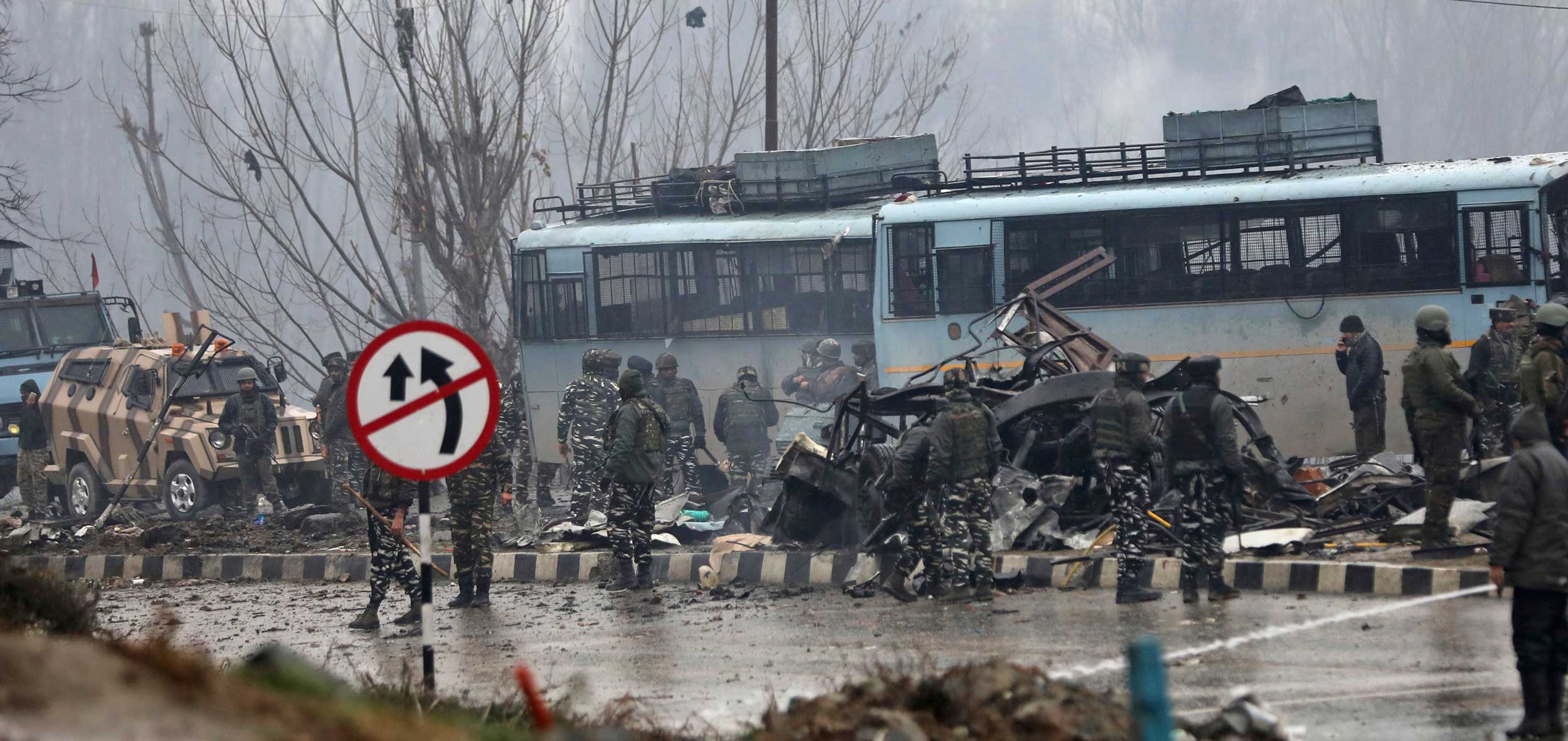At least 37 CRPF personnel were killed on the most protected highway in the country on Thursday when a suicide car bomber rammed a convoy of over 2,500 troopers who had to travel together in south Kashmir because of inclement weather.
The attack blew up a bus, reducing it to a mangled heap of metal and body parts and exacting the highest toll in a single attack in three decades of militancy in the Valley.
The bombing took place around 3.30pm on the Srinagar-Jammu highway, where hundreds of armed personnel remain deployed to ensure the safe movement of security convoys. The attack site, Lethpora village in Pulwama district, is around 20km from Srinagar.
The Pakistan-based Jaish-e-Mohammed claimed responsibility for the attack and said one of its commanders, south Kashmir resident Adil Ahmad Dar, was the suicide bomber. The purported suicide bomber — the mode of attack is rare but not unknown in Kashmir — uploaded a video message before the attack.
Unofficial sources put the toll at 44, but the CRPF said 37 were martyred. Over 50 were injured.
None of the previous attacks, including the Uri carnage that killed 19 soldiers and prompted India to launch what have come to be known as surgical strikes, matches the Lethpora explosion in the damage it has wreaked.
“The sacrifices of our brave security personnel shall not go in vain,” Prime Minister Narendra Modi tweeted on Thursday evening, calling the massacre “despicable” and “dastardly”. The US, too, condemned the attack.
New Delhi said Jaish founder Masood Azhar “has been given full freedom by Government of Pakistan to operate and expand his terror infrastructure”. Azhar had been released by the BJP-led government in 1999 in exchange for the Kandahar hijack hostages.
The bomber struck when as many as 2,574 personnel were being ferried in a convoy of vehicles from a Jammu transit camp to Srinagar, much more than the usual 1,000 because bad weather had forced the highway to be shut for the past two days.
The bomber, who had positioned his car among other private vehicles that were moving between the spaced-out convoy vehicles, rammed into the bus.
CRPF director-general R.R. Bhatnagar said “we will have to investigate if there was any violation of the SOP (standard operating procedure)”.
A CRPF officer told The Telegraph: “Around 200kg of explosives were believed to have been used. This is unprecedented in the 30-year history of the insurgency.”
If the assessment turns out to be correct, it will raise questions how the attackers amassed such a huge quantity of explosives when security forces have been carrying out relentless operations.













